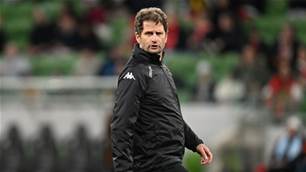The W-League and WNPL are unable to sustain the weight of talent searching for professional opportunities, and without action, Australian football may begin to haemorrhage its best and brightest.
There are 74 NPLW clubs around Australia. That means a lot of talented female footballers waiting to fulfil their potential.
However, the opportunity for these footballers to make it to the next stage is significantly limited, with only nine W League clubs providing women in Australia the chance to play semi-professional football at the national level.
That means around 180 W League roster spots available before taking out visa players. This means 1,400 NPLW players around Australia fighting for less than 180 W league places. Pythagoras himself will be scratching his head as to how this makes sense.
The incentive for young women to fork out big dollars to train 3-4 times per week is low enough as it is, with little financial reward available in female football. However the lack of opportunity to even make it to our premier national women’s competition is fast becoming a major factor as well.
In the end, the game will suffer if females simply walk away from the game.
Recent South Melbourne recruit Caitlin Pickett, who has been in the NPLW system for the past four years, says that giving local players a bigger chance to play in the W League will only motivate them to stay in the NPLW.

“If female footballers know there are more opportunities in the W League, they will likely stay in the NPLW for longer and work harder,” said Pickett.
“If there is a bigger incentive, naturally players will seek to improve their game so they can be recognised, which makes our product better in the long run.”
To play elite level football, females (and males for that matter), need to juggle work and study. It is not an easy thing but many ambitious footballers will make the effort.
However, at some point most will start to question if it’s all worth it. Not everyone will become a Sam Kerr, after all.
Expanding the W League is something that needs to happen sooner rather than later. Many will argue there isn’t sufficient talent available at the moment, but provide the right incentive and you may find better female footballers in the long run to fill the spots.
At a minimum, every A-League club should have a W League team. At present, Central Coast, Wellington and Western United don’t have a female equivalent. Western United have only just come in, so they need a year or two to get a female program up and running.
Central Coast did once have a team but it fell by the wayside back in 2011. Wellington could be the pinnacle for our Kiwi friends across the Tasman, but the cost of travelling to Australia every second week makes it a major challenge.
Conversely, Canberra are the only stand-alone W League club at the moment.
The question is, can Australian football afford to expand the W League? At the moment, the W League revenue streams are very low. The costs of running a W League club are rising with wages understandably increasing as females justifiably demand fair pay.
The realistic answer is no it can’t afford it, but another reality is that it must find a way. With AFLW and women’s Big Bash cricket getting bigger and more popular, football needs to find a way to open up more lucrative opportunities for females.
Pickett, who spent much of last year playing for the University of Wyoming in America on a scholarship, admits the threat posed by other sports is something that footballing authorities need to consider.
“We are already behind the new AFLW bargaining agreement that was announced recently," she said.
"Money isn’t the main reason I play, but it’s a good way to show us we are appreciated. Soccer has so much potential, we just need the investment.”

The good news is that things are happening now that mean this investment may be possible in the future. Clubs are selling W League only memberships. A-League memberships give free entry to W-League games.
The announcement earlier this month that every W League game will be covered by Fox Sports, as well as 14 games beamed live on ABC, is also a step forward for the women’s game. Every game will also be live on the My Football App as well as Kayo.
All of this means that elite level female footballers now have the opportunity to attract more fans at the gate or at home in their lounge rooms, giving them a great chance to generate more revenue.
Justifiably so, as many female footballers have complained in the past they don’t get the same opportunity to make money like their male counterparts.
“The new TV deal is exciting,” said Pickett. “It means more exposure as well as more money. Now the ball is in our court to make our game better.”
The more revenue generated, the more motivation there is for Football Federation Australia (FFA) to grow the W League to 10, 11 or even 12 teams.
This is important to the NPLW system as well, as players will have more opportunities to make it to the big time. This will only encourage players to work hard, stay in the system and improve their product - that is, female soccer. It’s a logical cycle.
It’s the only way forward. The numbers don’t lie, 74 doesn’t go into nine.
Related Articles

'Timing not right': Montemurro's verdict on Matildas vacancy

Matildas: 'Fourth at the Olympics is honestly the worst place you could come'
.jpg&h=172&w=306&c=1&s=1)













